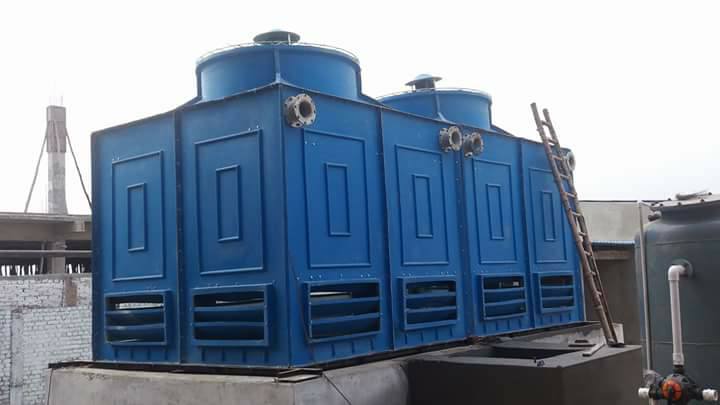Counter Flow Fills vs. Cross Flow Fills – Key Differences
| Feature | Counter Flow Fills | Cross Flow Fills |
| Air-Water Flow Direction | Air moves upward, water flows downward (opposite directions). | Air moves horizontally, water falls vertically (perpendicular directions). |
| Fill Material | Usually PVC/PP film fill (thin sheets for max surface area). | Can use splash fill (wood/PVC bars) or film fill. |
| Thermal Efficiency | Higher (more contact time between air & water). | Slightly lower (shorter contact time). |
| Footprint & Height | Taller but narrower (vertical design). | Shorter but wider (horizontal airflow). |
| Water Distribution | Uses high-pressure spray nozzles. | Uses gravity-fed distribution basins. |
| Energy Consumption | Needs more fan power (air must push upward). | Lower fan energy (horizontal airflow). |
| Clogging Risk | Higher (smaller fill gaps). | Lower (larger gaps in splash fill). |
| Maintenance | Harder to clean (dense fill). | Easier access (open design). |
| Best For | High-efficiency cooling (HVAC, data centres). | Industrial, dirty water (power plants, mills). |
1. Counter Flow Fills – Pros & Cons
- Higher cooling efficiency (longer air-water contact).
- Compact footprint (good for space-constrained sites).
- Better for clean water (ideal for HVAC, chillers).
- Prone to clogging (small fill passages).
- Higher fan power needed (air resistance is greater).
- More maintenance (harder to clean).
◉ HVAC systems
◉ Data center cooling
◉ Power plants (with clean water)
2. Cross Flow Fills – Pros & Cons
- Handles dirty water better (less clogging with splash fill).
- Lower energy consumption (easier airflow).
- Easier maintenance (accessible fill design).
- Less efficient than counter flow.
- Larger footprint (requires more space).
- Uneven water distribution risk (if basins are misaligned).
◉ Industrial plants (steel, paper mills)
Wastewater cooling
◉ Large-scale cooling (where space isn’t an issue)
Which One Should You Choose?
- For maximum efficiency & clean water → Counter Flow Fills (HVAC, data centres).
For dirty water & easier maintenance → Cross Flow Fills (industrial, heavy-duty).
